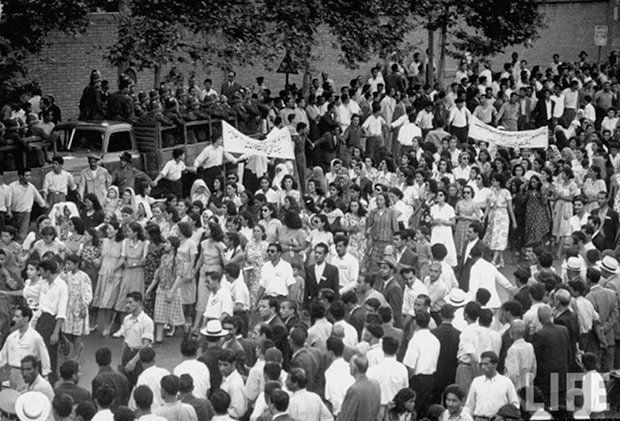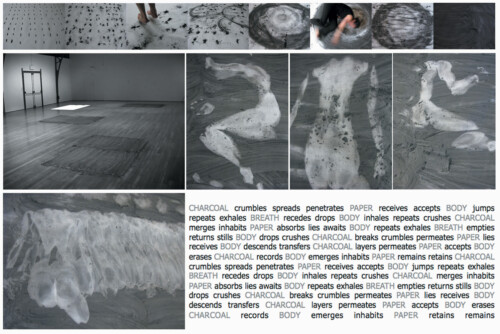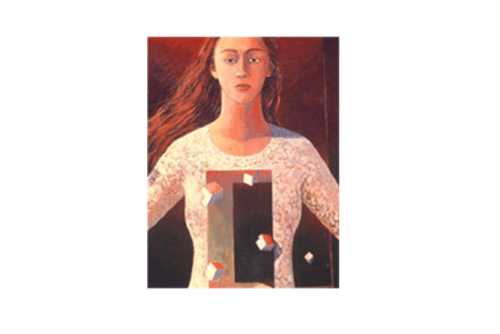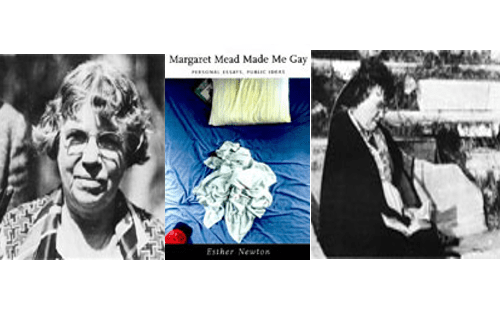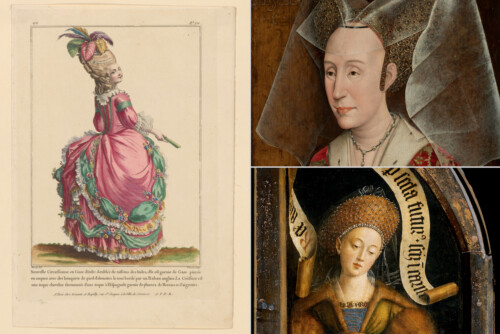Fifty pages later, at exactly the climactic moment in Camera Lucida when Barthes discovers photography’s essence, slavery comes up again:
I remember keeping for a long time a photograph I had cut out of a magazine—lost subsequently like everything too carefully put away—which showed a slave market: the slavemaster, in a hat, standing, the slaves, in loincloths, sitting. I repeat: a photograph, not a drawing or engraving; for my horror and my fascination as a child came from this: that there was a certainty that such a thing had existed: not a question of exactitude, but of reality: the historian was no longer the mediator, slavery was given without mediation, the fact was established without method. 1
One is reminded here of Regis Debray’s statement: “A fortiori, ideology could be defined as the play of ideas in the silence of technologies.” 2 Here, the silent technologies that establish Barthes’ certitude “without method” (an ostensibly nonideological knowing that for Louis Althusser would mark the pinnacle of ideological—and hence semiotic—function) would include all of the recording machines and disciplinary technologies involved in the mediation of people by graphing their skin as image or sign, converting subjects into objects and persons into commodities that together constitute and constellate as photography. In Camera Lucida, slavery itself composes photography’s primal scene, its degree zero, but Barthes reads an (the?) image of slavery—actually, ironically, and uncannily an absent image of slavery—in purely phenomenological terms.
Whether in the semiotic or evidentiary mode, slavery appears in Camera Lucida as supplementary to the photograph. In the first instance, the Casby photo, slavery appears as an essence that is visibly communicated, but aestheticized and thus of no more interest (since Barthes meaningfully pursues the photograph as an event beyond meaning). In the second evidentiary example, an absent image of slavery appears as the cynosure of photography itself—slavery and its absence exist, as it were, principally to establish the that-has-been-ness of the photograph. Thus the disappearance of method in Barthes’ establishing for himself the facts of slavery has, in fact, the opposite function in Camera Lucida: the discursive disappearance of slavery establishes the facts of photography; that is the method. It is only via the epistemic disappearance of slavery—and of all the historical-economic vectors that made both slavery and photography possible—that Barthes’ phenomenological account of photography as merely a technical medium with a unique property is possible. One must keep the histories of racial formation and political economy outside of the frame to have evidence without method because otherwise, one might see that the evidence is the method: the historical and technical separation of subjects from their skin explicitly places racialization and photography on a continuum. To produce photography as a stand-alone platform, slavery must be at once present and disavowed. Which is to say that slavery is one of the methods by and through which photography came to be what it is, or at least what it appears to be—an autonomous platform. From this it is crystal clear that colonialism, and slavery and the institutionalization and normalization of its practices, are part of the conditions by which bodies are first liquidated of subjectivity and reduced to images and signs for others to read. These modes of alienation are part of the economic and racial prehistory that gives rise to the society of the spectacle. Social photo-graphing provides the abstract machine for technical photo-graphing; chattel slavery haunts the photographic image. To fail to address this primordial disappearing—both the alienation of the skin and the alienation of the right to one’s look, persistently emerging in Barthes text as an eternal return of the repressed—would be to embrace the essence of the dominant discourse about photography, which as it stands unconsciously recapitulates, extends, and naturalizes violent forms of corporeal inscription, racial objectification, and social death as the very media of speculation.
Time constraints force me to note only in passing that such photo-graphy disappears bodies to make subjects appear, and disappears subjects to make bodies appear. The disappearance of the subjectivity of the slave-object becomes the means by which the subjectivity of the slave-master manifests. Likewise the slave’s body appears as the means of world-making and of slave-master subjectivity through the radical and violent disappearing of the slave’s subjectivity. Materially and psychologically, the objectification of the slave is a condition of possibility for the subjectivity of the slave-master. And the disappearance of slavery is the condition of possibility for Barthes’ philosophy of photography—that is, for the essence of photography as many still understand it.
As Harriet Jacobs’ example shows, to an extreme that was all-too-common, the slave as a subject had to disappear from view in a white-supremacist scopic regime in order to retain subjectivity and even life. What is remarkable in her case is that she was able to occupy this regime in a clandestine way that allowed her to preserve and ultimately constitute her subjectivity in public discourse—albeit at a tremendous price. It would not be incorrect to assert that under this scopic regime, Jacobs’ superhuman perseverance—which allowed her to live long enough to achieve literacy, write her life story, and reappropriate both her body and her gaze—is one of the punctums in the history of photography. Her presence constitutes a wound, a prick of the Real, which the dominant discourses on the origins, meaning, and significance of photography have preferred not to detect, to simply pass over in silence, as if her life and similar lives had nothing to do with the history of images and of image-making.
Without doubt, the camera obscura from which Harriet Jacobs miraculously emerges is an iteration of a visual-political system that extends in one way or another through the history of modern racism and colonialism, a visual-political system marked by gender as well as by race. There can be no doubt that gender dynamics underpinned the formation and, indeed, the form of photography (whether black and white, or colored) in a manner that was similar to, but necessarily distinct from race. Furthermore, these social vectors—vectors that are fundamentally linked to agency and oppression vis-à-vis objectification—are inseparable from the cultural meanings and, indeed, the mysteries of the photograph. Jacobs is objectified as a black and as a woman: in addition to her enslavement, the slave-master’s lust and the slave-mistress’s jealousy were what produced the particular circumstances of her incarceration in camera. What subsequently is allowed to appear and what is disappeared in photographs (what constitutes photography’s “program,” as Flusser might say) has everything to do with the dynamics of agency and desire in this regime. The fact that this regime is contested also places the use, meaning, interpretation, significance, and epistemology of photography on an inexorably political terrain. What would it mean, really, to think of slavery as a form of photography or conversely, of photography as a form of slavery? And again, what would it mean to think of photography as a vector of feminization and commodification, both of which are inseparable from racism in the modern era? And what are the long-term epistemological and political implications of a certain knowledge of this triple objectification that recognizes that these photographic racializing and engendering structures of encoding and expropriation are the conditions of possibility for the now ineluctably historical illusion of transcendent, unmarked, objective (photographic) perspectives which, despite their anachronistic ontologies, persist in rendering truths ostensibly “without method?” Specifically, for those of us who concern ourselves with media and politics as if life depended on these (which it does), does understanding the historicity of technological formations, cameras, film stocks, distribution systems, and the myriad other apparatuses of visualization in terms of race, gender, and commodification call out contemporary media theory’s technological determinism such that to refer to “photography”—or for that matter, “computers” or “the internet”—as if they were standalone media could be dismissed outright as a kind of platform fetishism bent on the disavowal of the immanent and absolute relevance of race, gender, and political economy to any and all technological questioning?
Although we might use Gwendolyn Audrey Foster’s idea of a “plantocary of images” or Hortense Spiller’s still unrivaled instantiation of “the flesh” as wedges of further inquiry, marking a starting point for reckoning the ontological being and unrepresentable experience of captured bodies always already overcoded by violent categories (and hence ideologies and moreover practices) of race and gender; my purpose in this brief intervention has only been to “stain the waters clear”—that is, to make the invisible visible in the seemingly transparent window that is the photograph, indelibly marking photography itself as a racial formation. 3 In this view Flusser’s account of the photograph as a “triple abstraction,” persuasive as it may be, remains woefully incomplete, as it is derived purely from mediatic shifts and devoid of geopolitical concreteness. 4 Indeed, the history of visuality needs to be entirely rewritten in terms that understand the intersecting roles of racialization, feminization, and commodification.
To be sure, no amount of looking—even knowledgably—at Avedon’s photo of William Casby, Born a Slave could redeem any aspect of the violent injustice and brutally unspeakable enduring of the past. Recognizing that contemporary visuality is bound up with racism and slavery—genetically, so to speak—and that so much of what is seen is actually a seeing through slavery does not amount to reparations. However the abiding thought that modern scopic (and I would also argue, discursive) regimes are inexorably entangled in lived racism, past and present, and that there is no photographic image, and possibly no post-photographic thought, that is untouched by racism shifts the terrain for the understanding and use of images and archives. May it also enable visions and practices that will help to one day make racism a “that has been” that is no more.
- Barthes 80; italics in the original.[↑]
- Regis Debray, Media Manifestos: On the Technological Transmission of Cultural Forms (London: Verso, 1996) 31.[↑]
- Gwendolyn Audrey Foster, Captive Bodies: Postcolonial Subjectivity in Cinema (Albany: State U of New York P, 1999); Hortense Spillers, “Mama’s Baby, Papa’s Maybe: An American Grammar Book,” Diacritics 17.2 (1987).[↑]
- Vilém Flusser, Towards a Philosophy of Photography, trans. Anthony Matthews (London: Reaktion, 2000).[↑]

